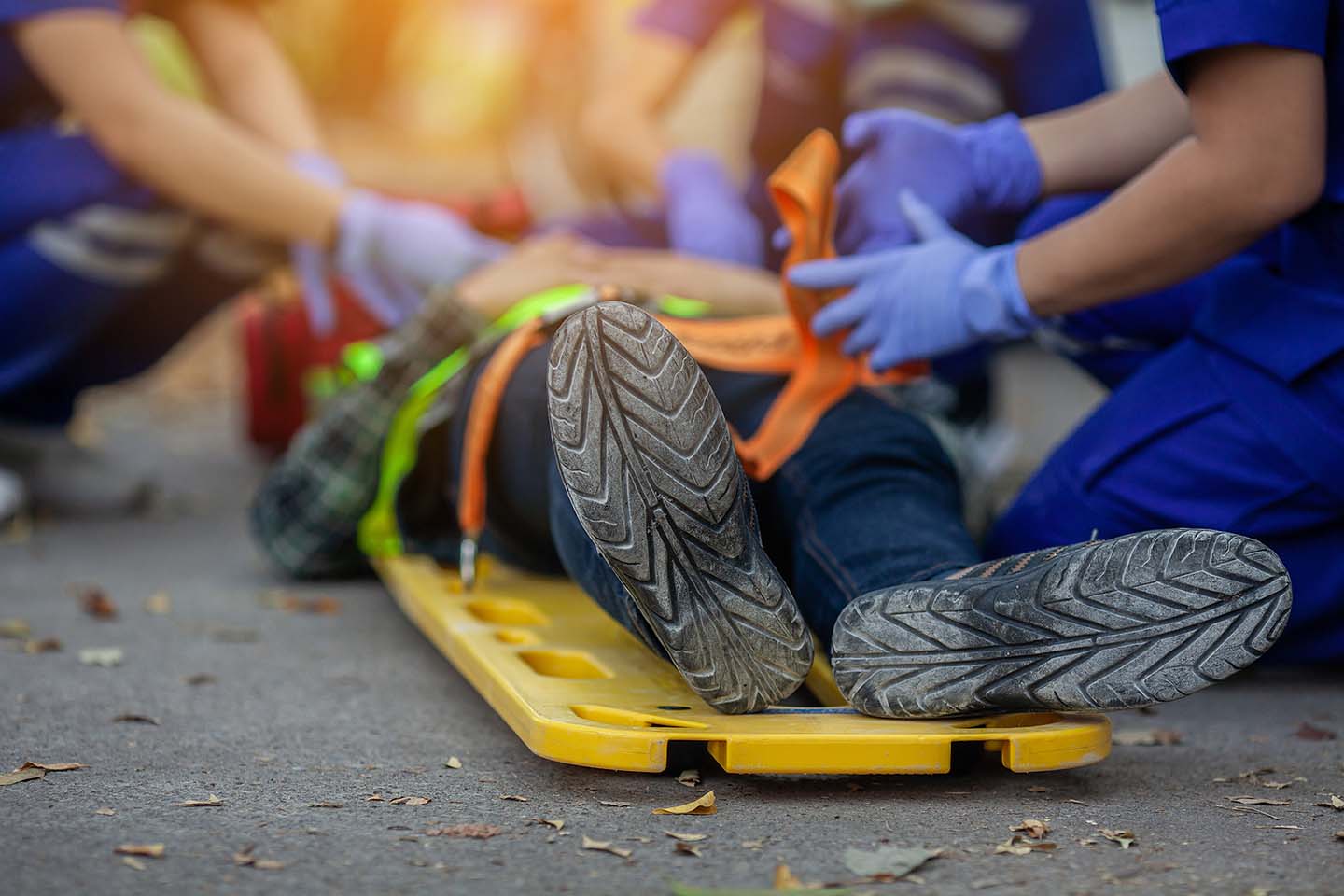Press Release
New App Gives Emergency Responders Real-Time Data During Mass Casualty Incidents
During a national emergency, first responders need to know which medical resources are immediately available and how to access them. The Johns Hopkins Applied Physics Laboratory (APL) in Laurel, Maryland, is working with the federal Biomedical Advanced Research and Development Authority (BARDA) to develop a software application that will meet this need, enabling effective communications across the response enterprise.
The app will address critical needs of emergency responders and other medical professionals delivering care during mass casualty incidents, as well as provide real-world situational awareness to leaders of the U.S. Department of Health and Human Services’ (HHS) Administration for Strategic Preparedness and Response (ASPR), under which BARDA falls.
The app, known as the Resource-related Information & Tracking Medical Communications Application (RITCA), will provide real-time access to information about available medical resources during mass casualty incidents — whether natural disasters, accidents or planned attacks.
Although RITCA is initially being developed for trauma and burn care, developers say it could be scaled up to become an all-hazard response system, helping to ensure that medical countermeasures are deployed effectively and used by medical professionals when needed most.
“Responding to a mass casualty incident requires a tremendous amount of coordination, sometimes across multiple jurisdictions and regional boundaries, as in the recent case of Hurricane Ian,” said Melanie Lockhart, the project manager leading the development of RITCA at APL. “That presents a real challenge to emergency response personnel, and RITCA is intended to get ahead of that problem.”
The system is intended to be user-friendly for emergency response personnel and medical professionals. It is also expected to provide critical information rapidly and securely about an unfolding mass casualty incident to ASPR and other government agencies, as well as the emergency response community at large.
RITCA also is intended to empower timely peer-to-peer communications within trauma and burn care communities for emergency care, and eventually telemedicine integration, to allow for remote guidance and even just-in-time training, for use when mass casualty incidents may place high demand on existing resources.
The app also will allow medical professionals to rapidly consult with experts when needed, on an everyday basis. By leveraging a routinely used communications channel to function in emergencies, this functionality will mitigate a need identified in BARDA’s work with trauma and burn care communities.
The developers are still fine-tuning the application’s final form, but the intended use cases suggest a multi-platform system accessible by a diverse user base.
“At this stage, it remains to be seen what the finished technical solution will look like, but we envision web and mobile applications with several types of end users,” said Lockhart. “It would need to be used by emergency response personnel to make intelligent decisions about where to route patients, clinical care providers who can update the information to provide situational awareness, and state- and federal-level decision-makers who are coordinating the distribution of resources and need to see the bigger picture.”
To ensure these communications channels are well established, trusted and tested, APL is developing RITCA in collaboration with BARDA’s partners at the American Burn Association, the American College of Emergency Physicians and the American College of Surgeons Committee on Trauma.
The RITCA project will begin with select burn and trauma centers. As a pilot project, the team will identify which HHS health information data sources are reliable for inclusion, as well as ensure the RITCA tool is customized and valuable to the care community at large for routine use.
The development of this app represents the first collaboration between APL and BARDA.
RITCA is being designed to interface in real time with multiple existing government and response systems with which APL has deep and longstanding expertise, according to David Blanchard, an assistant program manager in APL’s National Health Mission Area who is overseeing the work.
“APL has decades of experience enabling interoperability among existing systems — allowing different systems to talk to one another, even if they’re from different vendors or managed by different organizations,” Blanchard said. “Developing RITCA is a natural extension of that, and one we hope to leverage to help emergency response personnel save lives in mass casualty situations.”
This project has been funded in whole or in part with federal funds from the Administration for Strategic Preparedness and Response, Biomedical Advanced Research and Development Authority, under contract number 75A50122C00052.
